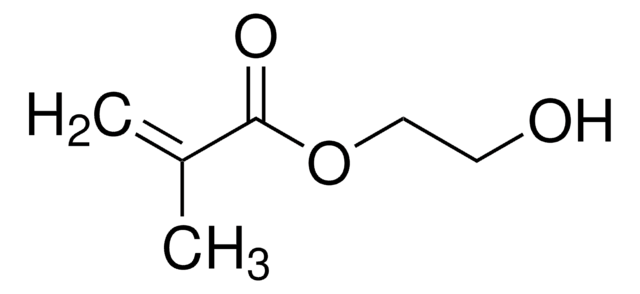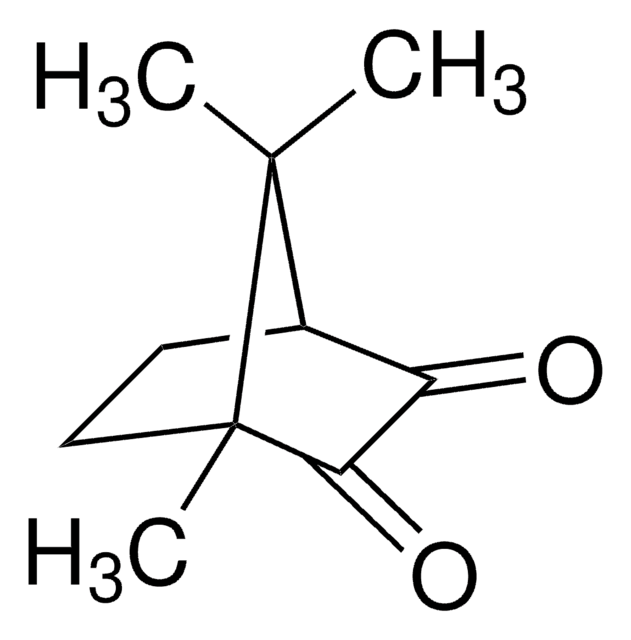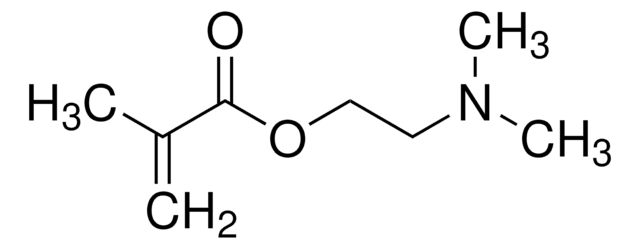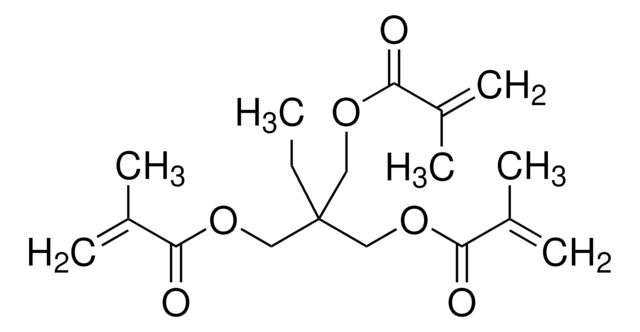Wichtige Dokumente
261548
Triethylenglycoldimethacrylat
95%, cross-linking reagent polymerization reactions, methacrylate, 80-120 ppm MEHQ as inhibitor
Synonym(e):
TEGDMA
About This Item
Empfohlene Produkte
Produktbezeichnung
Triethylenglycoldimethacrylat, contains 80-120 ppm MEHQ as inhibitor, 95%
Qualitätsniveau
Assay
95%
Form
liquid
Enthält
80-120 ppm MEHQ as inhibitor
Eignung der Reaktion
reagent type: cross-linking reagent
reaction type: Polymerization Reactions
Brechungsindex
n20/D 1.461 (lit.)
bp
170-172 °C/5 mmHg (lit.)
Dichte
1.092 g/mL at 25 °C (lit.)
Ω-Ende
methacrylate
α-Ende
methacrylate
Polymerarchitektur
shape: linear
functionality: homobifunctional
Lagertemp.
2-8°C
SMILES String
CC(=C)C(=O)OCCOCCOCCOC(=O)C(C)=C
InChI
1S/C14H22O6/c1-11(2)13(15)19-9-7-17-5-6-18-8-10-20-14(16)12(3)4/h1,3,5-10H2,2,4H3
InChIKey
HWSSEYVMGDIFMH-UHFFFAOYSA-N
Suchen Sie nach ähnlichen Produkten? Aufrufen Leitfaden zum Produktvergleich
Allgemeine Beschreibung
Anwendung
Signalwort
Warning
H-Sätze
Gefahreneinstufungen
Skin Sens. 1
Lagerklassenschlüssel
10 - Combustible liquids
WGK
WGK 1
Flammpunkt (°F)
332.6 °F - closed cup
Flammpunkt (°C)
167 °C - closed cup
Persönliche Schutzausrüstung
Eyeshields, Faceshields, Gloves, type ABEK (EN14387) respirator filter
Hier finden Sie alle aktuellen Versionen:
Besitzen Sie dieses Produkt bereits?
In der Dokumentenbibliothek finden Sie die Dokumentation zu den Produkten, die Sie kürzlich erworben haben.
Kunden haben sich ebenfalls angesehen
Artikel
The Progress in Development of Dental Restorative Materials
Unser Team von Wissenschaftlern verfügt über Erfahrung in allen Forschungsbereichen einschließlich Life Science, Materialwissenschaften, chemischer Synthese, Chromatographie, Analytik und vielen mehr..
Setzen Sie sich mit dem technischen Dienst in Verbindung.













